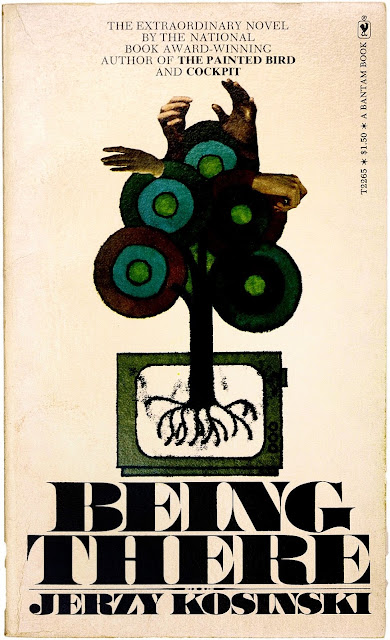ADAPTATION OF THE WEEK
Inspired by Chance
Jerzy Kosinski's Being There (1979)
Andrew Pulver
Saturday 13 November 2004
Author: Jerzy Kosinski (1933-91) survived the Nazi invasion of Poland (during which he apparently lost the power of speech) and became an academic in the communist regime. He emigrated to the US in 1957 and his first novel, The Painted Bird (1965), became a key addition to "Holocaust literature".
Having fortuitously avoided the Manson murders in 1969 - he was due to be Sharon Tate's dinner guest, but missing luggage meant he cancelled his visit - Kosinski completed Being There in 1970. His literary celebrity was assured - he even took a sizeable role in Reds (1981), playing a Bolshevik. However, in 1982, an article in the Village Voice accused him of plagiarism, as Being There was apparently taken from a Polish bestseller, The Career of Nikodem Dyzmy by Tadeusz Dolega-Mostowicz. Depressed by the reception of his subsequent work as he tried to prove his credentials, Kosinski committed suicide in 1991 after taking an overdose and taping a plastic bag over his head.
Story: A modern equivalent of the "feral child" tales popular in central Europe in the 18th and 19th centuries, Being There focuses on the figure of Chance the gardener, raised in complete isolation, except for TV.
Forced to leave the house where he lives and works by the death of his employer, Chance is taken in by an influential financier, Benjamin Rand, and his young wife, Eve, after a car accident. Known as Chauncey Gardiner after his name is misheard, Chance becomes a celebrity after his simple pronouncements about gardening are taken as meaningful political metaphors.
Eve falls in love with him, and plans to marry a bewildered Chance after Rand's death.
Film-makers: Hal Ashby (1929-88) was Norman Jewison's editor in the 1960s, working on The Cincinatti Kid (1965) and The Thomas Crown Affair (1968).
As a director, he became a key figure in the Hollywood new wave of the 1970s with Harold and Maude and The Last Detail, before finding popular success with Shampoo and one of the first post-Vietnam films, Coming Home. Playing Chance had been a long-term ambition for Peter Sellers. He sent Kosinski a telegram soon after the book's publication. But it was only towards the end of his life, when he was already ill with heart trouble, that he could get the project off the ground.
How book and film compare: Kosinski worked on the screenplay, and the film follows the path of the novel scrupulously. Kosinski inserts considerable embroidery and adds extra scenes, such as Chance's confrontation with the teen gang on his first day in the street.
The film's iconic sequence of Chance walking across the surface of a cemetery lake, however, was a last-minute inspiration of Ashby's. Ashby also personally edited in his preferred end-sequence - of Sellers repeatedly messing up a line - in all the cinemas showing the film on its first release after the producers refused it.
Inspirations and influences: The kind of symbiotic relationship with TV that Chance enjoyed became a popular theme in ensuing decades, from Martin Scorsese's The King of Comedy (1983), which elaborated on the idea of a viewer confusing TV and reality, to Ben Stiller's The Cable Guy (1996), in which a TV obsessive has no identity other than the one that he culls from the airwaves.




No comments:
Post a Comment